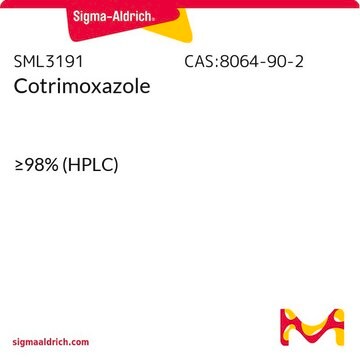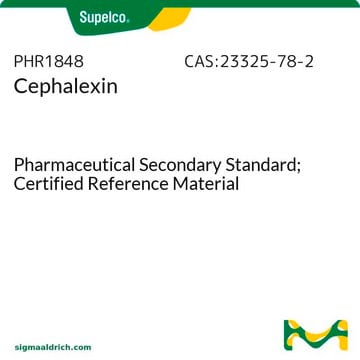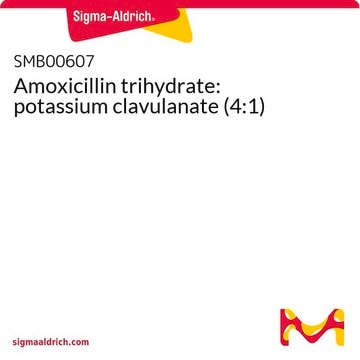A2487
Cotrimoxazole, Ready Made Solution
100 mg/mL in DMSO
Synonim(y):
Trimethoprim-Sulfamethoxazole, TMP-SMX
About This Item
Polecane produkty
Postać
liquid
Poziom jakości
stężenie
100 mg/mL in DMSO
kolor
colorless to faint yellow
spektrum działania antybiotyku
Gram-negative bacteria
Gram-positive bacteria
fungi
parasites
Tryb działania
DNA synthesis | interferes
Warunki transportu
dry ice
temp. przechowywania
−20°C
InChI
1S/C14H18N4O3.C10H11N3O3S/c1-19-10-5-8(6-11(20-2)12(10)21-3)4-9-7-17-14(16)18-13(9)15;1-7-6-10(12-16-7)13-17(14,15)9-4-2-8(11)3-5-9/h5-7H,4H2,1-3H3,(H4,15,16,17,18);2-6H,11H2,1H3,(H,12,13)
Klucz InChI
WZRJTRPJURQBRM-UHFFFAOYSA-N
Zastosowanie
Działania biochem./fizjol.
Opakowanie
Uwaga dotycząca przygotowania
Inne uwagi
Hasło ostrzegawcze
Warning
Zwroty wskazujące rodzaj zagrożenia
Zwroty wskazujące środki ostrożności
Klasyfikacja zagrożeń
Aquatic Chronic 3 - Repr. 2
Kod klasy składowania
12 - Non Combustible Liquids
Klasa zagrożenia wodnego (WGK)
WGK 2
Temperatura zapłonu (°F)
Not applicable
Temperatura zapłonu (°C)
Not applicable
Certyfikaty analizy (CoA)
Poszukaj Certyfikaty analizy (CoA), wpisując numer partii/serii produktów. Numery serii i partii można znaleźć na etykiecie produktu po słowach „seria” lub „partia”.
Masz już ten produkt?
Dokumenty związane z niedawno zakupionymi produktami zostały zamieszczone w Bibliotece dokumentów.
Klienci oglądali również te produkty
Nasz zespół naukowców ma doświadczenie we wszystkich obszarach badań, w tym w naukach przyrodniczych, materiałoznawstwie, syntezie chemicznej, chromatografii, analityce i wielu innych dziedzinach.
Skontaktuj się z zespołem ds. pomocy technicznej












